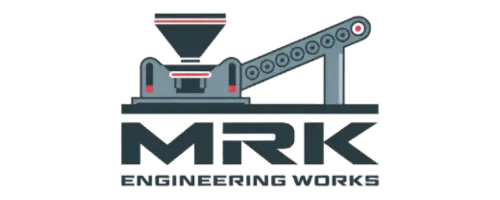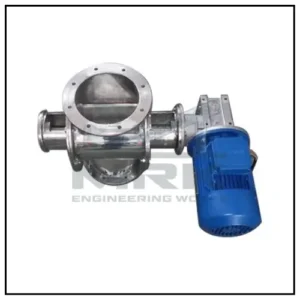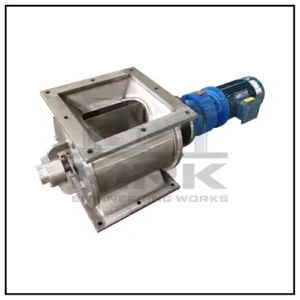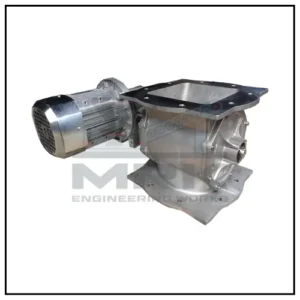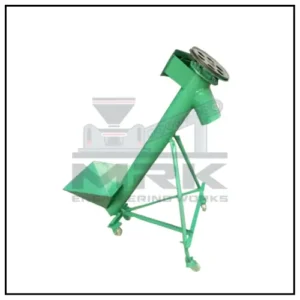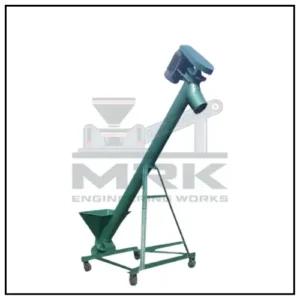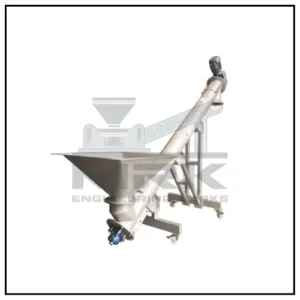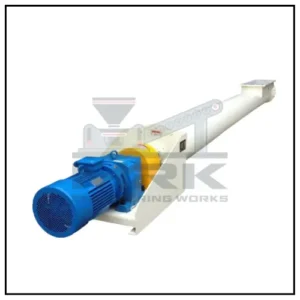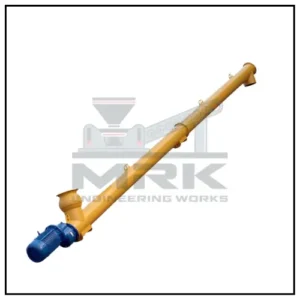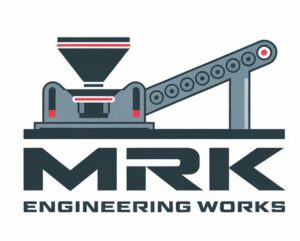In the world of chemical manufacturing, efficient mixing is crucial for producing high-quality products.
One of the most versatile and widely used machines for this purpose is the Ribbon Blender Machine.
This article explores the essential aspects of ribbon blenders, their applications in chemical industries, benefits, features, and tips for maintenance and selection.
What is a Ribbon Blender Machine?
A Ribbon Blender Machine is a type of industrial equipment used to mix dry powders, granules, and pastes in an efficient and uniform manner. It consists of a horizontal U-shaped trough with two helical ribbons—one inside and one outside the trough—that move materials in opposite directions.
The outer ribbon pushes the materials from the ends of the blender towards the center, while the inner ribbon moves the materials from the center to the ends. This opposing motion ensures that the materials are mixed thoroughly, resulting in a homogenous blend.
Ribbon blenders are commonly used in various industries, such as food processing, pharmaceuticals, chemicals, and plastics, due to their versatile design and ability to handle a wide range of materials.
They are typically used for mixing both powder-to-powder and powder-to-liquid combinations and are known for their ease of operation and maintenance.
Types of Ribbon Blender Machines
Ribbon blenders come in several configurations and variations, each designed to suit specific industrial needs.
Here are the most common types:
1. Single Ribbon Blender
The Single Ribbon Blender uses one helical ribbon that runs along the length of the trough. This type of blender is typically used for smaller batches of materials.
It provides good mixing efficiency and is suitable for medium-sized production needs, especially when dealing with dry powders or granular materials.
Features:
- Compact design.
- Suitable for small to medium batch sizes.
- Lower energy consumption compared to larger machines.
Applications:
- Pharmaceutical manufacturing.
- Food processing.
- Cosmetics production.
2. Double Ribbon Blender
The Double Ribbon Blender features two sets of ribbons: one inner ribbon and one outer ribbon. The inner ribbon moves materials toward the center of the blender, while the outer ribbon pushes them outward.
This design creates a more aggressive mixing action, resulting in better homogeneity, especially for larger batch sizes or more challenging materials.
Features:
- Increased mixing efficiency due to double ribbons.
- Suitable for larger or more complex material types.
- Better suited for blending high-viscosity substances.
Applications:
- Chemical manufacturing.
- Heavy-duty industrial processes.
- Producing products like fertilizers and detergents.
3. Vertical Ribbon Blender
The Vertical Ribbon Blender is designed with vertical orientation, where the mixing action takes place in a vertically aligned shaft.
This type is used in specific applications where vertical movement is more efficient or necessary, such as high-shear mixing or when space constraints make a horizontal design unsuitable.
- Features:
- Ideal for specialized applications requiring vertical movement.
- Great for mixing materials that need to be fed from the top.
- Applications:
- Specific chemical processes.
- Food industries needing vertical mixing for specific ingredients.
4. Horizontal Ribbon Blender
The Horizontal Ribbon Blender is the most common type of ribbon blender used in industrial applications.
The design features a U-shaped trough with horizontal ribbon blades that provide uniform mixing. This type is especially versatile and suitable for a wide range of materials, from powders to granular substances, and pastes.
Features:
- Efficient for large volumes of material.
- Easily customizable with various lengths and capacities.
- Suitable for a broad range of industries and materials.
Applications:
- Chemical processing.
- Food manufacturing.
- Pharmaceuticals.
Read More: Hammer Mill and Pulverizer for Chemical Industries
What is a Ribbon Blender Machine for Chemical Industries?
In the chemical industry, a Ribbon Blender Machine plays a crucial role in efficiently blending a wide range of dry powders, granular materials, and even pastes.
These machines are designed to ensure thorough mixing with minimal dusting and minimal heat generation, which is particularly important in chemical processes where precision and consistency are paramount.
The blender’s ribbon design ensures the uniformity of the mixture, which is vital for product quality in the chemical industry.
Ribbon blenders are widely used for a variety of applications within the chemical industry, including mixing chemical powders, additives, and catalysts.
Whether it’s creating new compounds, mixing raw materials for coatings, or processing active ingredients for pharmaceuticals, the ribbon blender provides a consistent, reliable solution for these processes.
How Does a Ribbon Blender Machine Improve Mixing Efficiency in Chemical Industries?
A Ribbon Blender Machine is highly valued in the chemical industry due to its ability to improve mixing efficiency.
The unique design and operational features of ribbon blenders contribute significantly to faster, more uniform mixing of materials, which is crucial for high-quality product output.
Here’s how ribbon blenders improve mixing efficiency in chemical industries:
1. Effective Material Movement
The most distinctive feature of a ribbon blender is its dual-ribbon design, where one ribbon moves materials toward the center of the machine and the other moves them toward the outer edges.
This motion facilitates constant movement of the material, ensuring that no part of the batch remains unmixed.
The opposing ribbon action continuously shifts the material back and forth, increasing the chances of particles coming into contact and mixing together. This dynamic motion promotes uniformity and prevents material segregation.
2. Uniform Mixing of Different Materials
In the chemical industry, materials often have varying densities, particle sizes, and flow characteristics.
Ribbon blenders are designed to handle this challenge by providing thorough mixing of ingredients that may be otherwise difficult to blend evenly.
The ribbons ensure that both light and heavy materials are properly integrated into the mix without clumping or segregation.
3. Shorter Mixing Time
Due to the constant movement and thorough mixing action within the ribbon blender, materials are processed much faster than in other types of blenders, such as tumblers or paddle mixers.
The horizontal motion of the ribbon blenders increases the surface area contact between particles, resulting in a quicker and more effective blending process.
4. Versatility with Different Material Types
Ribbon blenders can handle a variety of material types, from fine powders and coarse granules to pastes and slurries.
Their design allows them to accommodate a wide range of viscosities, making them adaptable to different chemical formulations, whether dry or wet.
Ribbon blenders can mix a diverse range of materials used in chemical production processes, which increases flexibility and operational efficiency.
5. Energy Efficiency
Ribbon blenders are designed to be energy efficient. The unique ribbon action and efficient use of motor power result in lower energy consumption compared to other high-speed mixers or blenders.
The controlled motion of the ribbons allows for optimal energy use, minimizing waste while maintaining a high standard of mixing quality.
6. Scalability
The scalability of ribbon blenders makes them perfect for chemical industries, where production volumes can vary. Ribbon blenders are available in various sizes to accommodate small, medium, or large batch production.
This scalability allows manufacturers to maintain consistent mixing efficiency, whether working on a laboratory scale or producing large industrial batches.
7. Reduced Product Loss
Ribbon blenders help minimize product loss during the mixing process due to their efficient mixing action.
The uniform movement of materials ensures that no significant portion of the product remains stuck to the sides of the blender or stuck within the blender’s mechanism. This reduces waste and increases the overall yield from each batch.
Why is a Ribbon Blender Machine the Best Choice for Mixing Chemicals in the Industry?
A Ribbon Blender Machine stands out as one of the most effective and reliable machines for mixing chemicals in the industry.
It is widely preferred due to its design, operational efficiency, and ability to handle a diverse range of materials, including powders, granules, pastes, and even liquids.
Below are the reasons why ribbon blenders are considered the best choice for chemical mixing in industrial applications:
1. Uniform Mixing of Materials
Ribbon blenders are designed with a dual ribbon structure that facilitates thorough and uniform mixing of materials. The inner and outer ribbons work in opposing directions, ensuring that material is continuously moved from the center to the outer edges and vice versa.
This unique motion leads to an even distribution of materials, which is critical in chemical manufacturing, where consistency is key to product quality.
2. Versatility in Material Handling
Ribbon blenders can handle a wide variety of materials, from dry powders and granular substances to pastes and slurries.
This versatility makes ribbon blenders ideal for chemical industries that deal with diverse material types, allowing for the seamless blending of different chemicals with varying properties.
3. Ability to Handle Large Volumes
Ribbon blenders are designed for large-scale production and can accommodate significant batch sizes.
With scalable options available, ribbon blenders can be customized to meet the demands of both small-scale lab production and large-scale industrial mixing, making them versatile across different production stages.
4. Precise Control and Flexibility
Ribbon blenders come with adjustable speed settings and can be equipped with variable drive systems, allowing operators to control the mixing speed depending on the material’s characteristics.
This flexibility enables optimal mixing efficiency for different chemical products.
5. Minimal Material Waste
Ribbon blenders are efficient in ensuring minimal material loss during the mixing process.
The design minimizes dead zones, where materials might not be adequately blended, and maximizes the movement of materials through the blender. As a result, product yield is optimized, reducing wastage.
6. Easy Maintenance and Cleaning
Ribbon blenders are relatively simple to maintain, and their design allows for easy cleaning between batches.
In industries where cross-contamination between batches of different chemicals is a concern, the ability to thoroughly clean the blender ensures the integrity of each product batch.
Related Products
What Are the Benefits of Using a Ribbon Blender Machine in Chemical Manufacturing?
The Ribbon Blender Machine provides several benefits that enhance the efficiency, quality, and cost-effectiveness of chemical manufacturing processes.
Here are the main advantages:
1. High Efficiency and Consistency
Ribbon blenders are known for their high mixing efficiency. The ribbon blades ensure that materials are thoroughly and uniformly blended, which is essential in chemical manufacturing to achieve consistent product quality.
Whether mixing powders, granular materials, or pastes, ribbon blenders offer a reliable solution for maintaining the consistency of the product.
2. Versatility in Chemical Mixing
The ribbon blender can handle a variety of chemical materials, including fine powders, coarse granules, liquids, and semi-solids.
This versatility makes it suitable for a wide range of applications, such as mixing catalysts, resins, pigments, fertilizers, and active ingredients in pharmaceutical formulations.
3. Improved Homogeneity
The blending action of the ribbon blades ensures that the materials are mixed in a homogenous manner.
The opposing motion of the ribbons provides better material flow and interaction, which improves the homogeneity of chemical products.
This is particularly important for applications such as the production of coatings, pharmaceuticals, and food additives.
4. Energy Efficiency
Ribbon blenders are designed to be energy-efficient due to their relatively low energy consumption during operation.
The machine’s low power requirement, combined with its efficient mixing design, helps keep operational costs lower while maintaining high performance.
The design of ribbon blenders optimizes power use, making them more efficient than other types of mixing equipment.
5. Scalability for Different Production Levels
Ribbon blenders are available in various sizes, making them suitable for both small-scale laboratory applications and large-scale industrial production.
This scalability allows manufacturers to scale up their production while maintaining the same quality and mixing efficiency.
6. Reduced Operational Downtime
Ribbon blenders are designed for durability and reliability, and they generally require less maintenance than other types of mixers.
Their simple design and ease of maintenance help minimize downtime, which is important in industrial settings where productivity is key.
7. Cost-Effectiveness
Given the long-lasting durability and low maintenance requirements of ribbon blenders, they are a cost-effective solution for chemical manufacturing.
The efficient mixing process reduces the need for excess chemicals and energy, helping manufacturers keep costs under control.
How Do Ribbon Blender Machines Reduce Energy Consumption in Chemical Mixing Processes?
Reducing energy consumption is crucial in industrial settings, particularly in chemical manufacturing, where large-scale mixing is required.
Ribbon blenders help achieve energy savings in several ways:
1. Efficient Mixing Action
The unique ribbon action of the blender, with its inner and outer ribbons moving materials in opposite directions, provides highly effective mixing without the need for excessive power.
This minimizes the amount of energy required to mix materials effectively, making the process more efficient.
2. Optimal Motor Power Usage
Ribbon blenders are designed with energy-efficient motors that ensure smooth, continuous operation with minimal power consumption.
The motors used in ribbon blenders are often variable-speed, which allows for power adjustments based on the mixing requirements.
This flexibility means that the machine operates at an optimal speed, reducing unnecessary power consumption.
3. Low-Speed Operation
Unlike other mixing equipment that may require high-speed or high-torque motors, ribbon blenders typically operate at lower speeds.
The lower operating speeds contribute to energy savings without sacrificing mixing efficiency. The design ensures that the materials are thoroughly mixed even at lower speeds.
4. Improved Material Flow
The U-shaped trough and dual ribbon system of the blender allow for optimal material flow, preventing clogging or buildup inside the machine.
This improves the overall efficiency of the mixing process, reducing the need for extended mixing times and the associated energy costs.
5. Reduced Heat Generation
Since ribbon blenders operate at lower speeds and utilize an efficient design, they generate less heat during operation. In chemical processes, excessive heat can lead to energy loss and even degradation of certain materials.
The low-heat operation of ribbon blenders reduces the need for additional cooling systems, further contributing to energy savings.
What Are the Top Brands of Ribbon Blender Machines for Chemical Industries?
When selecting a Ribbon Blender Machine for chemical industries, it’s important to choose a trusted brand known for its high-quality equipment, reliability, and industry-specific innovations.
Here are some of the top brands that manufacture ribbon blenders for chemical industries:
1. Ross Engineering
Ross Engineering is one of the leading manufacturers of industrial mixing equipment, including ribbon blenders.
Their ribbon blenders are known for their robust design, ease of maintenance, and versatility.
They offer a wide range of models, from laboratory-scale blenders to large-scale industrial machines, all tailored for chemical and other industries.
Key Features:
- Customizable to specific industry needs.
- Energy-efficient and durable motors.
- Superior blending performance with minimal heat generation.
Applications: Chemical, pharmaceutical, food processing, and cosmetic industries.
2. Patterson-Kelley
Patterson-Kelley offers a variety of mixing equipment, including high-quality ribbon blenders.
Known for their engineering precision, these ribbon blenders provide efficient mixing for chemicals, powders, and granular materials.
Their ribbon blenders are highly customizable for specific production requirements.
Key Features:
- Available in various sizes and configurations.
- Designed for heavy-duty use in industrial applications.
- High-quality stainless steel construction for durability.
Applications: Chemical processing, coatings, and polymers.
3. Charles Ross & Son Company
Charles Ross & Son Company is another renowned manufacturer of ribbon blenders and other mixing equipment.
Their ribbon blenders are recognized for their high mixing efficiency, durable construction, and customization options.
Ross also offers specialized ribbon blenders for the chemical industry with tailored features like jacketed models for temperature-sensitive materials.
Key Features:
- Multiple customization options (sizes, motor power, etc.).
- Advanced mixing features like variable speed control.
- Jacketed ribbon blenders for temperature control.
Applications: Chemical, pharmaceutical, food, and plastic industries.
4. GSL (Glen Mills)
Glen Mills provides a variety of laboratory and industrial-scale mixing equipment, including ribbon blenders.
Their blenders are known for their robust performance in mixing both powders and granules efficiently.
Glen Mills focuses on providing machines suitable for industries that require high precision and quality control.
Key Features:
- Designed for uniform and rapid blending of materials.
- High-speed blending capabilities.
- Customizable mixing features for specific chemical formulations.
Applications: Chemical, food processing, and powder coatings.
5. SaintyCo
SaintyCo is a leading supplier of pharmaceutical and chemical processing equipment, offering ribbon blenders that are known for their reliable performance and high mixing efficiency.
SaintyCo blenders are designed for high-capacity operations and are used in the chemical industry for blending various materials, including fine powders and granular substances.
Key Features:
- Durable construction with stainless steel and high-quality alloys.
- Efficient mixing performance with low energy consumption.
- Versatile in handling a range of materials, including viscous pastes.
Applications: Chemical, pharmaceutical, food, and plastic industries.
6. Arvinda Blenders
Arvinda Blenders is a manufacturer known for producing high-quality mixing equipment, including ribbon blenders for the chemical industry.
Their products are designed for high-performance blending with a focus on reliability, ease of use, and durability.
Key Features:
- Reliable performance with high mixing efficiency.
- Easy-to-clean designs to prevent contamination.
- Customizable sizes for different production scales.
Applications: Chemical, food processing, and cosmetic industries.
What Safety Features Should Be Considered When Using a Ribbon Blender Machine in Chemical Industries?
Safety is a top priority when operating any industrial equipment, especially in the chemical industry where materials may be hazardous or volatile.
When using a Ribbon Blender Machine in chemical industries, the following safety features should be considered:
1. Emergency Stop Button
- The emergency stop button is a critical safety feature that allows operators to halt the machine immediately in case of an emergency.
- This prevents accidents or damage to both the equipment and the materials being processed.
2. Safety Guards and Covers
- Ribbon blenders should be equipped with safety guards or covers around the mixing area.
- These shields prevent operators from coming into contact with moving parts such as the ribbons or motor components, which could cause serious injury.
3. Overload Protection
- Ribbon blenders should have overload protection to prevent damage to the motor or other critical parts in case of excessive strain or blockage.
- Overload protection helps in safeguarding the equipment from breakdowns, especially in chemical processes where materials can vary in texture and consistency.
4. Explosion-Proof Design (for Hazardous Chemicals)
- For chemical industries that deal with flammable or volatile materials, ribbon blenders should be designed with explosion-proof features.
- This includes grounding systems, sealed motor housings, and explosion venting systems to mitigate the risk of ignition or chemical reactions that could lead to explosions.
5. Vacuum or Pressure Seals
- For mixing sensitive chemicals or powders that can create dust or fumes, ribbon blenders can be equipped with vacuum or pressure seals.
- These seals help to contain the chemicals within the blender, preventing the release of harmful gases, fumes, or dust into the surrounding environment.
6. Temperature Control Systems
- Ribbon blenders used in chemical industries may need to handle materials that require specific temperature conditions.
- Temperature control systems such as jackets for heating or cooling, as well as sensors to monitor the temperature inside the blender, help maintain the desired conditions and prevent overheating or unsafe reactions.
7. Rotational Speed Limiters
- Some ribbon blenders come with speed limiters that control the maximum rotational speed of the mixing ribbons.
- These limiters prevent excessive speeds that could damage both the materials being mixed and the equipment itself.
8. Alarm Systems
- Alarm systems are essential for alerting operators when a malfunction occurs or when parameters go beyond preset safety thresholds.
- For example, an alarm could trigger if the motor overloads, or if there’s a temperature or pressure spike.
How Do You Maintain a Ribbon Blender Machine for Chemical Industries?
Proper maintenance of a Ribbon Blender Machine is essential to ensure long-term performance, minimize downtime, and prevent costly repairs.
The following maintenance practices should be considered for chemical industry applications:
1. Regular Cleaning
One of the most important aspects of maintaining a ribbon blender is ensuring that it is regularly cleaned, especially when switching between batches or materials. Chemical residues can affect product quality or lead to contamination in subsequent runs.
- Maintenance Tip: Use non-corrosive cleaning agents that will not damage the blender’s surfaces. Ensure that all parts of the machine, including the trough and ribbon blades, are thoroughly cleaned after every use.
2. Lubrication of Moving Parts
To ensure smooth operation, regularly lubricate the machine’s moving parts, such as the ribbon blades, motor shafts, and bearings. Proper lubrication helps reduce friction, prevent wear and tear, and extend the life of the machine.
- Maintenance Tip: Use the manufacturer-recommended lubricants and apply them according to the maintenance schedule. Over-lubrication or under-lubrication can lead to mechanical issues.
3. Check for Wear and Tear
Over time, ribbon blades and other components such as the shaft, bearings, and seals may wear out due to the continuous mixing action. Regularly inspect these parts for signs of damage, such as cracks, rust, or degradation, and replace them as necessary to prevent further damage.
- Maintenance Tip: Inspect the ribbons for signs of uneven wear and replace them promptly to maintain efficient mixing performance.
4. Ensure Proper Alignment
Misalignment of the ribbon blades or the drive system can lead to inefficient mixing, increased power consumption, or even equipment failure. Periodically check the alignment of the ribbons and the motor to ensure they are operating as intended.
- Maintenance Tip: Perform alignment checks regularly and adjust as necessary to prevent misalignment-related issues.
5. Inspect Electrical Components
Regularly inspect the electrical components of the ribbon blender, including the motor, wiring, and control panels. This ensures that there are no loose connections or exposed wires that could pose a safety hazard or cause electrical failures.
- Maintenance Tip: Ensure that all electrical components are properly connected and functioning. Schedule periodic checks for wear, such as corrosion or frayed wires.
6. Monitor Motor Health
The motor is the heart of the ribbon blender, and it is crucial to keep it in good working condition. Regularly check the motor for signs of overheating, unusual noises, or vibration, which could indicate a problem.
- Maintenance Tip: Monitor the motor’s performance and ensure that it is operating within the specified range of speed and temperature.
7. Regular Calibration and Inspection of Controls
To maintain precise operation, calibrate and inspect the blender’s speed controls, temperature control systems, and other automated settings regularly. This ensures that the blender continues to operate within the desired parameters.
- Maintenance Tip: Perform routine checks and recalibration of control systems to ensure consistency and accuracy in the mixing process.
What Are the Different Applications of a Ribbon Blender Machine in the Chemical Industry?
Ribbon Blender Machines are integral to the chemical industry due to their versatility and ability to handle a broad range of materials.
They are particularly effective in blending powders, pastes, liquids, and even semi-solids.
Below are detailed applications of ribbon blenders in the chemical sector:
1. Powder and Granular Material Blending
Ribbon blenders are extensively used in the chemical industry to blend dry powders and granular materials.
These materials include pigments, resins, chemicals, and active ingredients that require thorough blending before being used in manufacturing or packaging.
Ribbon blenders ensure uniform distribution of these ingredients, which is essential in many industrial applications, such as the production of paints, coatings, and detergents.
For example, in the pigment production industry, ribbon blenders are used to mix powdered pigments with binders and other chemicals to create a consistent, homogeneous mixture.
In the detergent manufacturing process, they are used to combine surfactants, builders, and other cleaning agents.
2. Blending of Chemicals for Coatings and Paints
In the paint and coatings industry, ribbon blenders are used to mix pigments, resins, solvents, and additives.
This process ensures that the pigments are uniformly dispersed in the resin or binder, which is crucial for the consistency of color, texture, and overall performance of the paint.
Ribbon blenders also prevent clumping or separation of pigments, ensuring smoothness and uniformity in the final product.
In the production of industrial coatings, ribbon blenders can mix materials such as oils, waxes, and resins, creating a consistent coating that adheres well to various surfaces.
3. Pharmaceutical Ingredient Mixing
In pharmaceutical manufacturing, the uniform mixing of active pharmaceutical ingredients (APIs) with excipients is crucial to ensure the consistency and reliability of dosage forms, such as tablets and capsules.
Ribbon blenders are used to mix these ingredients effectively. Due to the precision required, these blenders are designed to handle small batches or large-scale production while ensuring product quality is maintained.
For instance, in tablet manufacturing, ribbon blenders mix excipients such as starches, fillers, and binders with APIs to form a homogeneous powder blend, ensuring consistent dosage in every tablet.
4. Blending of Liquid and Powder Combinations
Ribbon blenders can also mix liquids and powders together, which is important for the chemical industry when working with suspensions, emulsions, or other chemical formulations.
For example, adhesives, sealants, and paints often require the addition of solvents or oils to powders to create a consistent blend. The ribbon blender’s action ensures the proper dispersion of liquids into powders, producing an even mixture.
This capability is especially useful in industries where liquid and powder mixtures must maintain stability and consistency, such as in the manufacture of cosmetic products or pharmaceutical suspensions.
5. Production of Specialty Chemicals
Specialty chemicals, such as polymers, catalysts, and additives, often require precise blending to achieve the desired properties. Ribbon blenders are used to combine ingredients that need uniform dispersion and blending without excessive shear forces that could alter the chemical makeup.
For example, polymer production requires the blending of monomers and solvents to ensure that the molecular structure is uniform.
In the production of chemical catalysts, ribbon blenders ensure that active ingredients and supports (such as alumina or silica) are blended thoroughly without compromising their properties.
6. Polymer and Resin Blending
Ribbon blenders are essential in polymer and resin production, where various raw materials, such as monomers, initiators, and solvents, need to be blended before polymerization or further processing.
The uniform mixing provided by ribbon blenders ensures consistent molecular weight, viscosity, and other critical properties in the final polymer product.
In epoxy resin production, for example, ribbon blenders mix resins with hardeners, curing agents, and pigments, ensuring that the final product cures properly and has the desired performance characteristics.
7. Blending of Fertilizers
Ribbon blenders are widely used in fertilizer production, where they combine various nutrients, such as nitrogen, phosphorus, and potassium, along with trace elements and fillers, to create a homogeneous blend.
The even distribution of these chemicals ensures the consistency of nutrient content in the final fertilizer products, which is crucial for their effectiveness in agricultural applications.
For example, in the production of granular fertilizers, ribbon blenders are used to mix dry powders before they undergo further granulation, ensuring that each grain has a uniform nutrient distribution.
8. Blending of Detergents and Cleaning Agents
In the detergent and cleaning agent industries, ribbon blenders play a crucial role in ensuring the proper mixing of surfactants, builders, enzymes, fragrances, and other ingredients.
Uniform mixing is vital for ensuring that detergents perform consistently across various cleaning applications, such as laundry or industrial cleaning.
Ribbon blenders are ideal for mixing powdered detergents or for combining liquid surfactants with powders in the production of solid detergents.
9. Petrochemical Product Mixing
In the petrochemical industry, ribbon blenders are used to mix a variety of chemicals involved in the production of fuels, lubricants, and solvents.
These blenders ensure that materials like petroleum-based products, additives, and surfactants are blended evenly to meet specific performance standards.
For instance, ribbon blenders are used to mix lubricants and oils with chemical additives, ensuring the uniform distribution of components to maintain consistent viscosity and performance characteristics in the final product.
How Do Ribbon Blender Machines Ensure Uniform Blending of Powders and Liquids in the Chemical Sector?
Ribbon blenders are highly effective at achieving uniform blending in the chemical sector due to their unique design and operational features.
Below are the ways in which ribbon blenders ensure efficient and consistent blending:
1. Dual-Ribbon Mixing Action
The most important feature of a ribbon blender is its dual-ribbon design. The inner ribbon moves the materials from the center of the blender towards the walls of the trough, while the outer ribbon moves the materials from the walls back toward the center.
This opposing motion ensures that materials are continually re-circulated and thoroughly mixed, achieving a high level of uniformity.
For powders, this dual action helps break up clumps, while for liquids, it ensures proper dispersion and blending. By using both ribbons to promote continuous movement, the blender can mix materials more effectively and quickly than other types of mixers.
2. Trough Design for Material Flow
The U-shaped trough of a ribbon blender facilitates optimal material flow. The U-shape allows the materials to flow from the center to the edges and back again in a continuous cycle.
This design ensures that no part of the material is left unmixed, preventing dead spots and ensuring that every ingredient is evenly distributed. This uniform material flow is critical for achieving consistent product quality in chemical formulations.
For mixing liquids and powders, the trough shape helps the liquid to distribute evenly throughout the powder, ensuring that the mixture remains stable and homogeneous.
3. Effective Shear Forces
Ribbon blenders generate shear forces that break down agglomerates or clumps of materials, such as coarse powders or high-viscosity liquids.
These forces are sufficient to break up the material without causing excessive heat or degradation, making ribbon blenders ideal for sensitive chemicals that need to be blended carefully.
For example, in blending sticky powders or high-viscosity liquids, ribbon blenders ensure that the liquid component is evenly distributed throughout the powder, preventing uneven texture or clumping.
4. Variable Speed and Agitation Control
Many ribbon blenders come with variable speed controls, which allow operators to adjust the mixing speed depending on the nature of the materials being processed.
Lower speeds are often used for delicate materials, while higher speeds can be employed for thicker mixtures or faster processing. This flexibility ensures that blending is optimized for each batch, preventing material degradation or over-mixing.
The ability to adjust speeds is crucial when mixing materials of varying viscosities, as it ensures that both powders and liquids are adequately incorporated without causing shear damage to fragile substances.
5. Temperature Control for Sensitive Materials
Ribbon blenders can be equipped with temperature control features, such as jacketed troughs or internal heating/cooling systems.
These systems maintain the desired temperature during the blending process, which is essential for heat-sensitive chemicals, such as polymers, resins, or pharmaceuticals.
By controlling the temperature, ribbon blenders ensure that materials do not degrade or react prematurely, ensuring a uniform and stable mixture.
Temperature control is particularly important for chemical reactions that occur during mixing or for emulsification processes where temperature stability ensures the proper dispersion of ingredients.
6. Homogeneous Dispersion of Liquids
When mixing liquids with powders, the opposing ribbon action ensures that the liquids are uniformly dispersed into the dry ingredients.
The design of the ribbons helps break up liquid droplets and spread them evenly throughout the batch, creating a uniform mixture. This is particularly important when creating suspensions, emulsions, or wet granulation products.
In the chemical sector, achieving uniform dispersion is essential to maintain product quality and consistency, especially in products like paints, adhesives, or pharmaceutical suspensions.
Can Ribbon Blender Machines Be Customized for Specific Chemical Blending Needs?
Yes, Ribbon Blender Machines can be highly customized to meet the specific blending needs of different chemical processes.
Various features and design adjustments can be made to ensure optimal performance for particular applications in the chemical industry.
Here are ways ribbon blenders can be customized:
1. Customized Trough Shapes and Sizes
Ribbon blenders come with a variety of trough shapes and sizes to accommodate different materials and production scales.
The trough design can be tailored to suit specific material flow requirements, such as using a V-shaped or rectangular trough for better material movement, or a longer trough for larger production volumes.
For example, in high-capacity operations, the size of the trough can be adjusted to handle larger batches without compromising blending efficiency.
2. Speed and Agitation Control
Ribbon blenders can be fitted with variable speed drives to allow for precise control over the mixing process.
This customization ensures that the blender operates at the optimal speed for each material being processed.
Whether mixing fine powders, heavy granules, or liquid and powder combinations, the speed of the ribbons can be adjusted for maximum blending efficiency.
3. Temperature Control Systems
Ribbon blenders can be fitted with heating or cooling jackets around the trough to regulate the temperature during mixing.
This is particularly useful for chemical processes that involve heat-sensitive materials or those that require controlled temperatures to achieve the desired chemical reactions.
For example, the cooling jackets can be used when mixing viscous liquids or sensitive chemicals to prevent overheating, while heating jackets help maintain temperatures for polymerization or chemical reactions.
4. Customized Ribbon Blade Design
The ribbon blades themselves can be customized in terms of size, shape, and material to better suit the materials being blended.
For example, in applications involving abrasive materials, blenders may use stronger, more durable materials for the ribbon blades to prevent wear and tear.
For sticky or viscous substances, custom coatings or special blade angles can be used to reduce material buildup and improve the mixing efficiency.
5. Explosion-Proof and Safety Features
For industries dealing with flammable or explosive chemicals, ribbon blenders can be customized to include explosion-proof motors, grounding systems, and pressure-relief valves to prevent accidents and ensure safe operation.
This is essential when mixing volatile substances or when there’s a risk of generating dust or sparks.
Custom safety features, such as automatic shut-off systems, safety guards, and lockout systems, can be added to protect operators and ensure that the machine operates safely during each batch process.
Other Products
-
Chemical Industry Related Our Products
Rotary Airlock Valve – 350 mm Dia Outlet Stainless Steel for Chemical Industries
₹1.00Rated 0 out of 5 -
Chemical Industry Related Our Products
Rotary Airlock Valve – 400 mm Dia Outlet Stainless Steel for Chemical Industries
₹1.00Rated 0 out of 5 -
Chemical Industry Related Our Products
Rotary Airlock Valve – 450 mm Dia Outlet Stainless Steel for Chemical Industries
₹1.00Rated 0 out of 5 -
Pharma Industry Related Our Products
Tubular Screw Conveyor – 3 Inch Dia, Mild Steel for Pharma Industries
₹35,000.00Rated 0 out of 5 -
Pharma Industry Related Our Products
Tubular Screw Conveyor – 4 Inch Dia, Mild Steel for Pharma Industries
₹50,000.00Rated 0 out of 5 -
Pharma Industry Related Our Products
Tubular Screw Conveyor – 6 inch Dia, Mild Steel for Pharma Industries
₹65,000.00Rated 0 out of 5 -
Pharma Industry Related Our Products
Tubular Screw Conveyor – 8 Inch Dia, Mild Steel for Pharma Industries
₹80,000.00Rated 0 out of 5 -
Pharma Industry Related Our Products
Tubular Screw Conveyor – 10 Inch Dia, Mild Steel for Pharma Industries
₹95,000.00Rated 0 out of 5
What is the Average Cost of a Ribbon Blender Machine for Chemical Industries?
The cost of a Ribbon Blender Machine can vary significantly based on factors such as capacity, customization, material type, and specific features for a given chemical application.
The cost also differs depending on the location (US or India), brand, and additional options such as heating/cooling jackets, explosion-proof systems, or automatic control systems.
Average Cost in the US:
In the United States, the price of a Ribbon Blender Machine typically ranges from $5,000 to $50,000, depending on various factors.
- Small-scale laboratory models: $5,000 – $15,000
- Medium-scale industrial models: $15,000 – $30,000
- Large-scale industrial models (high capacity): $30,000 – $50,000 or more
The higher end of the price range is for ribbon blenders that come with advanced features such as variable speed drives, temperature control systems, explosion-proof designs, or customizable mixing capabilities.
Average Cost in India:
In India, ribbon blenders are generally more affordable due to differences in labor costs, manufacturing practices, and the local market. The price range in India is typically:
- Small-scale laboratory models: ₹3,00,000 – ₹8,00,000 (approximately $3,600 – $9,600)
- Medium-scale industrial models: ₹8,00,000 – ₹15,00,000 (approximately $9,600 – $18,000)
- Large-scale industrial models: ₹15,00,000 – ₹30,00,000 (approximately $18,000 – $36,000)
The cost in India can be significantly lower compared to the US for similar models, but pricing will still depend on specifications, brand reputation, and additional customization for specific chemical processes.
Factors Influencing Cost:
- Material Construction: Stainless steel or special alloys for corrosion resistance increase the cost.
- Size and Capacity: Larger blenders for industrial-scale operations are more expensive.
- Customization Features: Additional features like temperature control, speed control, explosion-proof design, and agitators for specialized chemical applications can add to the overall cost.
- Brand Reputation: Renowned manufacturers (e.g., Ross, Patterson-Kelley) may cost more due to higher reliability and support.
What Are the Common Challenges When Using a Ribbon Blender Machine in Chemical Production?
While Ribbon Blender Machines are efficient and versatile, several challenges can arise in chemical production, which affect their performance and the quality of the final product.
1. Incomplete Mixing of Materials
Despite the opposing ribbon design, ribbon blenders can sometimes struggle with incomplete mixing, particularly when materials have varying densities, sizes, or viscosities. For example, heavy and fine particles may not blend effectively, or liquid and powder combinations might not achieve uniform dispersion.
- Solution: Proper material loading techniques (e.g., pre-blending or adding ingredients in stages), adjusting the speed, and ensuring correct batch size can help. For materials with extreme properties, alternative equipment like high-shear mixers may be more effective.
2. Clumping and Agglomeration
In some chemical formulations, such as adhesives, high-viscosity substances, or sticky powders, clumping and agglomeration can occur. Ribbon blenders may not fully break up these clumps, which can lead to uneven mixing and product quality issues.
- Solution: Using ribbon blenders with variable speed control can help adjust the agitation for more delicate mixing. In some cases, a wetting agent or pre-mixing can be added to prevent clumping.
3. Overheating and Excessive Shear
Some chemical processes generate heat due to friction or exothermic reactions. This can lead to overheating, which may degrade heat-sensitive materials, especially in cases where high shear forces are applied for thorough blending.
- Solution: Implementing cooling jackets or using temperature sensors within the ribbon blender can help control the temperature. Lower-speed mixing and periodic pauses may also help mitigate excessive heat generation.
4. Dust Generation and Contamination
Ribbon blenders, especially those used for fine powders, can generate dust during the mixing process. This is particularly concerning in industries dealing with hazardous materials or when there is a risk of contamination between batches.
- Solution: Using dust collection systems, sealing mechanisms, or installing vacuum loading systems can help prevent the release of dust and reduce contamination risks. Closed-loop systems or explosion-proof designs are critical when handling hazardous chemicals.
5. Wear and Tear on Blades and Troughs
Ribbon blenders handle heavy-duty tasks, and the continuous agitation can cause wear and tear on the ribbon blades and the trough. Over time, abrasive materials or highly viscous substances can damage these parts, leading to decreased mixing efficiency and potential equipment failure.
- Solution: Regular maintenance, including inspections for wear, blade sharpening, and replacing damaged components, is necessary to maintain optimal performance. Using higher-grade materials for blades (e.g., hardened steel or ceramic coatings) can extend their lifespan.
6. Inconsistent Batch-to-Batch Performance
Ribbon blenders are sensitive to batch size and material variation. If the machine is not appropriately sized or if the material properties differ from batch to batch, this can lead to inconsistent blending results, impacting the quality of the final product.
- Solution: Ensuring the correct batch size and material consistency before mixing and using standard operating procedures (SOPs) for loading and mixing can help minimize batch-to-batch variability.
Conclusion:
Ribbon blender machines stand out as indispensable tools in chemical manufacturing, offering unparalleled efficiency, homogeneity, and adaptability.
Their ability to optimize energy usage, support diverse applications, and maintain safety standards makes them a vital asset for achieving consistent, high-quality production.
Investing in these versatile mixers ensures long-term operational excellence and cost savings in the competitive chemical industry.
